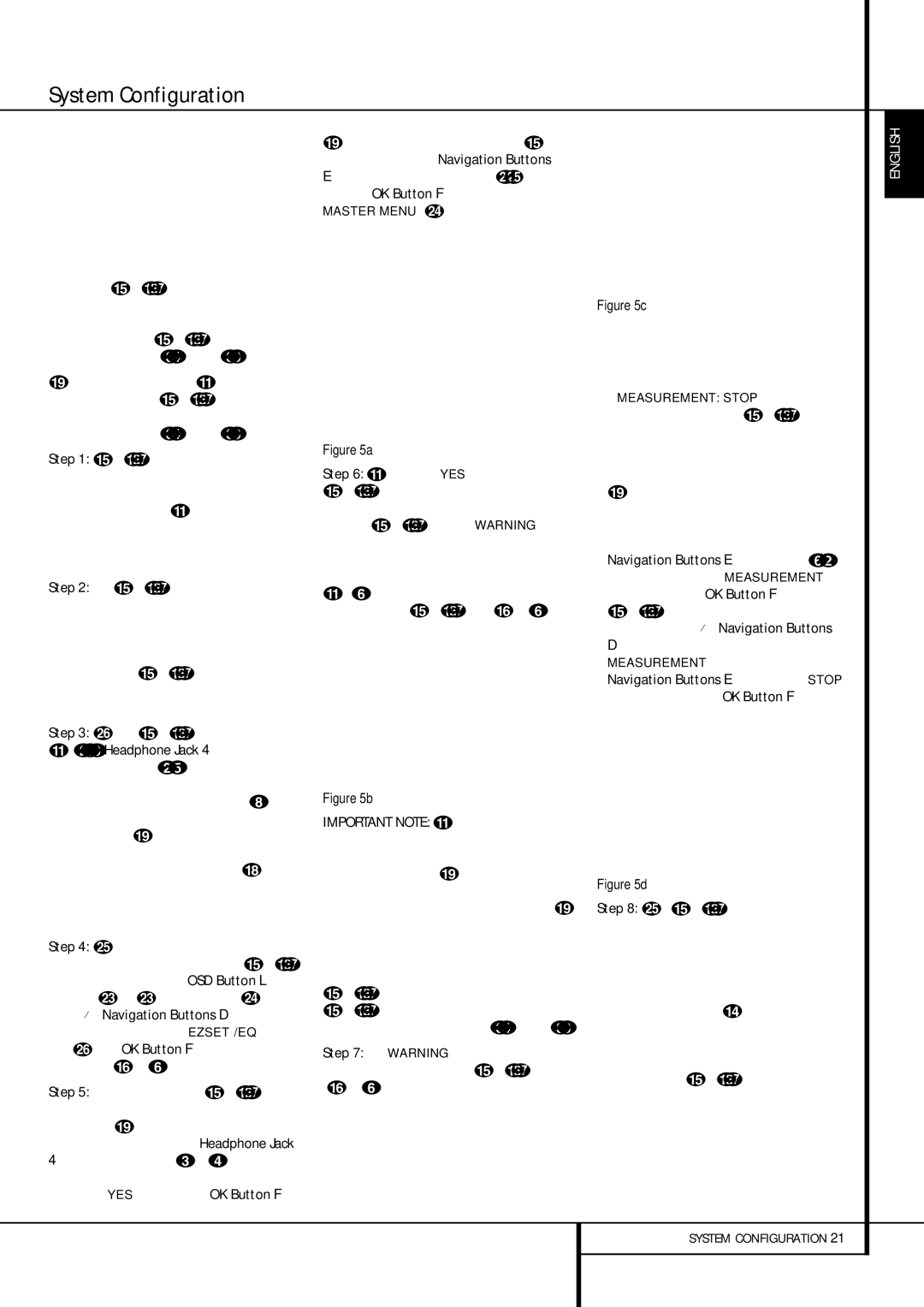rival those achieved with expensive test equip- ment and time-consuming procedures. The end result is a system calibration profile that enables your new receiver to deliver the best possible sound, no matter what type of speakers you have or what the dimensions of your listening room are.
We recommend that you take advantage of the precision of EzSet/EQ to calibrate your system, but if desired you may also make any of the configuration settings manually, or trim the settings provided by EzSet/EQ by following the instructions on pages 23 through 27.
If you wish to configure your AVR manually, or if for some reason your EzSet/EQ microphone is unavailable, you may still do so by following the instructions on pages 23 through 27.
Step 1: EzSet/EQ requires that your listening room have as little background noise as possible to avoid interfering with the measurement of tones produced by your AVR during the setup procedure. Turn off all loud fans, air conditioners and other equipment, and try to avoid making any noise during the process.
Step 2: The EzSet/EQ microphone should be placed in either your usual listening position or, if there is a large seating area, the center of the room, at the listeners’ ear level. You may find it convenient to use a camera tripod for stable placement of the EzSet/EQ microphone at the correct height. The microphone includes a thread- ed insert on the bottom for tripod mounting.
Step 3: Plug the EzSet/EQ microphone into the AVR 147’s Headphone Jack 4, making certain that the mini-plug to 1/4" phone plug adaptor supplied with the microphone is firmly connected. The microphone cable is approximately 7 meter long, which should accommodate most listening room situations. If required, you may use an optional extension cable, available at most elec- tronics stores, for use in larger rooms. However, we recommend that you avoid using extension cords for the microphone cable, as they may adversely affect the test results.
Step 4: Once the microphone is properly posi- tioned and plugged in, proceed to the EzSet/EQ menus by first pressing the OSD Button L to bring the Master Menu to the screen. Next, press the ⁄/¤ Navigation Buttons D to move the on-screen cursor to the EZSET/EQ menu line. Press the OK Button F to move to the next screen (Figure 5a).
Step 5: The first screen of the EzSet/EQ system will now appear to remind you to plug in the microphone. If you have not already done so, plug the microphone into the Headphone Jack
4as described in steps 2 and 3. When you are ready to proceed, make certain that the cursor is pointing to YES and press the OK Button F.
If you do not wish to continue with the EzSet+ process, press the ‹/› Navigation Buttons
Efor the arrow to point to NO and then press the OK Button F to return to the MASTER MENU. Note that if you attempt to move to the next menu without plugging in the microphone, a reminder message will flash at the bottom of the screen.
Figure 5a
Step 6: After entering YES to start the EzSet/EQ system, you will next see a brief warn- ing message, and the screen will then change to the main EzSet/EQ menu. The WARNING screen is a reminder that in order for the system to per- form accurate measurements, it is important that the listening room be as quiet as possible.
After 5 seconds, the screen will change again to display the main EzSet/EQ menu (Figure 5b).
Figure 5b
IMPORTANT NOTE: Anyone with hearing that is sensitive to loud noises should leave the room at this point, or use ear protection sufficient to reduce the noise level. Inexpensive foam-style ear plugs, available at most drug stores, may be used to reduce the sound level to a tolerable level. If you are uncomfortable with, or cannot tolerate, loud sounds and do not use some sort of ear pro- tection, we strongly recommend that you leave the room and ask someone else to run the EzSet/EQ process, or that you do not use EzSet/EQ and enter the configuration settings manually, as described on pages 23 through 27.
Step 7: The WARNING screen will automati- cally be replaced by the main EzSet/EQ menu (Figure 5c).
Figure 5c
While this screen is visible, you may start and stop the calibration process, or monitor the progress of the measurements and view the results. When the screen first appears, you will see MEASUREMENT: STOP on the first line of the menu list. To start the EzSet/EQ test process, you must first tell the system how many speakers are in your system. To do that, choose one of these two options:
•If your system includes a traditional surround speaker complement of five main speakers (front left/center/ front right/surround right/ surround left) and a subwoofer, press the ‹/›
Navigation Buttons E so that 5.1 appears to the right of MEASUREMENT, and then press the OK Button F to start EzSet/EQ. To stop the calibration process at any time, press the ⁄/¤ Navigation Buttons
Dto move the on-screen cursors to the MEASUREMENT line; press the ‹/›
Navigation Buttons E so that STOP appears and press the OK Button F.
Figure 5d
Step 8: Once EzSet/EQ has been started, you will hear test signals circulate among all of the speakers as the system sets the master level, checks to see where there are speakers, sets the distance measurement and calculates delay time settings, sets the speaker “size”, and sets the speaker crossover point. During the measurement and calibration process, you may observe the progress of the testing by reading the messages that appear in the second line of the menu listing. When the EzSet/EQ screen first appears, it contains a series of dashes, but as the test and measurement proceeds, you will see the following messages as the individual measurements are taken:

